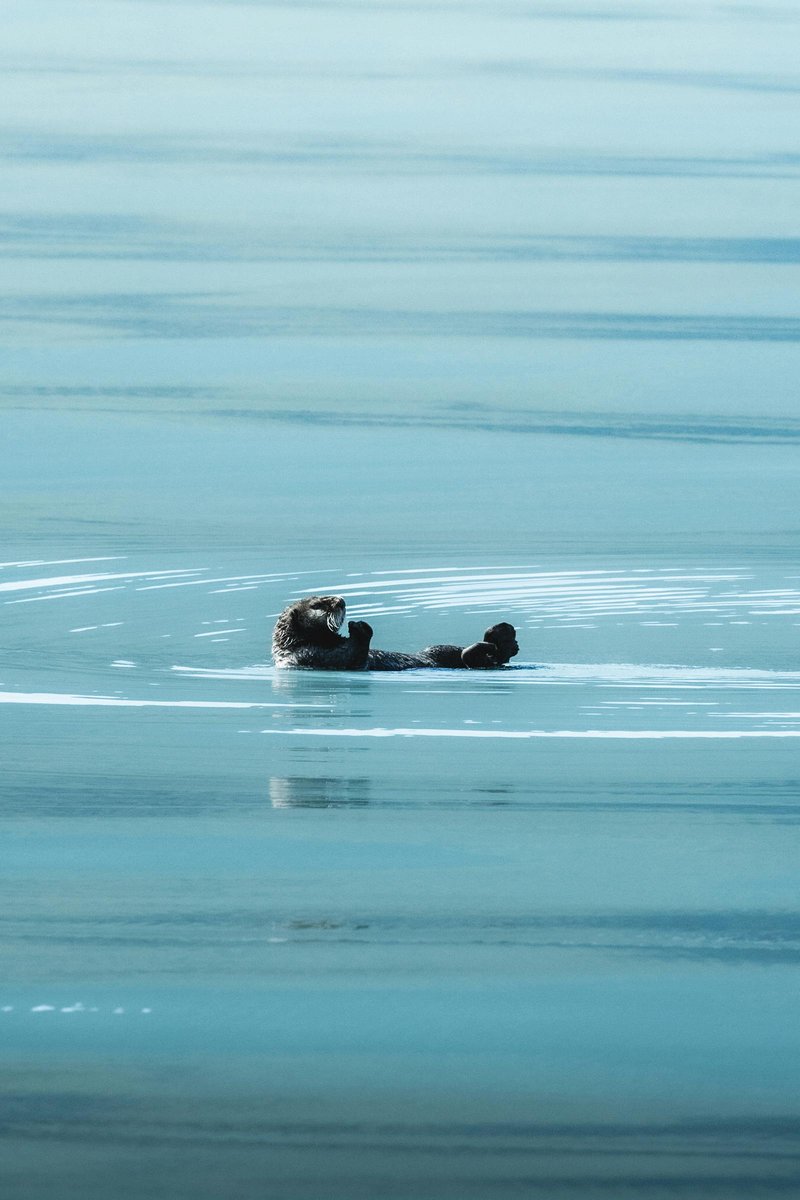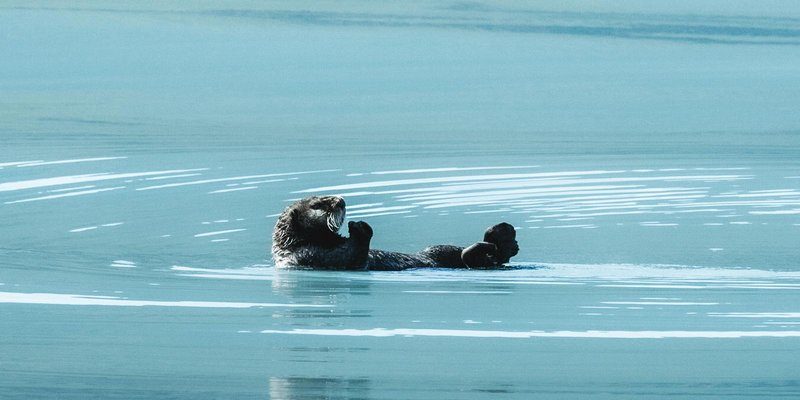
Sea otters are integral to their environment, playing vital roles in maintaining healthy ecosystems. You might be surprised to learn that they are more than just soft, furry animals who float on their backs. Like heroes in a storybook, they have superpowers that help their habitat thrive. So, if you’ve ever wondered about sea otters and what makes them tick, you’re in the right place. Let’s unravel these myths together and get to the core of what these lovable creatures really are.
Myth 1: Sea Otters Are Just Cute Animals
You might think of sea otters as the adorable critters you see online or at the aquarium, and it’s hard to argue with that! They have furry faces and playful personalities that can melt your heart. But here’s the thing: sea otters are also incredibly important to their ecosystems. They are what we call a “keystone species,” meaning their presence is crucial for maintaining the structure of their environment.
When sea otters are healthy and thriving, they help keep sea urchin populations in check. Why does that matter? Well, without otters to control them, sea urchins can overpopulate and wreak havoc on kelp forests. Kelp forests provide habitats for many marine species and help absorb carbon dioxide, so otters play a significant environmental role.
In essence, while their cuteness is undeniable, we should appreciate sea otters for their ecological contributions as much as for their charm. They embody the delicate balance of marine life, reminding us why protecting them is essential.
Myth 2: Sea Otters Are Dangerous
Some folks think that sea otters can be aggressive or even dangerous to humans. This misconception probably stems from the fact that they are wild animals. Let’s clear things up: sea otters are primarily gentle and curious creatures. Like any wild animal, they can bite if threatened. However, they aren’t out there looking to attack anyone.
In fact, sea otters are quite social. They often form rafts, which are groups that float together, sometimes holding paws to stay together. This behavior not only keeps them warm but also shows their friendly nature. If you ever get lucky enough to see them in the wild, you’ll likely notice that they prefer to play, dive, and munch on their favorite foods rather than causing trouble.
So, while it’s good to respect their space—as you would with any wild animal—don’t be afraid of these playful sea companions. They are more likely to entertain you than to pose any threat.
Myth 3: Sea Otters Only Eat Fish
You might imagine sea otters as fish connoisseurs, but their diet is much more varied! While they do eat fish from time to time, sea otters primarily feast on invertebrates. Their favorite snacks include sea urchins, crabs, clams, and even sea stars. They are excellent hunters and can dive to great depths in search of food.
One of their most impressive tricks? Sea otters use tools—now that’s a skill not every animal has! They often grab rocks and use them to crack open hard-shelled prey like clams and sea urchins. Picture a tiny marine version of a construction worker, breaking open their lunch with a rock. It’s a fascinating sight and a testament to their intelligence.
So, next time you think of sea otters, remember that they have a diverse palate and a knack for culinary creativity. It’s not just about fish; they are true ocean foragers!
Myth 4: Sea Otters Are Solitary Creatures
It’s easy to picture sea otters as loners, floating around the ocean by themselves. But in reality, they are usually quite social animals. Sea otters often form groups called rafts, and these can range from just a few individuals to over a hundred. When they come together, they can be a lively, playful bunch!
Rafts offer several advantages. Not only do they provide social interaction, but they also help keep the otters warm and safe from predators. Being part of a raft makes it easier to watch out for each other and share food resources. Plus, in these groups, you’ll see them grooming each other and sometimes even playing cute games. It’s like a sea party!
So, while you might see a lone otter floating on its back in a video, know that they often prefer the company of their friends. They thrive on social connections just like we do.
Myth 5: Sea Otters Are Not Affected by Pollution
You might think that since sea otters are such resilient creatures, they can handle pollution without a hitch. Unfortunately, that’s not true. Sea otters are quite sensitive to their environment. Pollution, particularly from oil spills and plastic waste, poses serious threats to their health and safety.
Oil spills can damage their thick fur, which they rely on for insulation against cold water. When otters get oil on their fur, it loses its waterproof qualities, making them vulnerable to hypothermia. Plus, ingesting toxins from polluted waters through their food can result in severe health issues.
Here’s the reality: protecting sea otters means protecting the ocean they thrive in. Reducing pollution and protecting their habitats is essential for their survival. Every effort counts, whether it’s advocating for clean ocean practices or supporting conservation initiatives.
Myth 6: Sea Otters Are Not Endangered
You might think sea otters are just fine, given their cute reputation and captivating behaviors. But the truth is, sea otters are considered a threatened species. Once hunted extensively for their fur, their populations have bounced back somewhat due to conservation efforts, but they still face significant challenges.
Threats like habitat loss, pollution, and climate change continue to impact their populations. For instance, changing ocean temperatures can affect their food supply, leading to vulnerabilities in their survival. Though there have been improvements, ongoing protection and support are critical for their future.
Understanding that sea otters remain endangered can be a wake-up call. It highlights the importance of conservation efforts and how our actions can impact these unique creatures. Every little bit helps—supporting local conservation groups can make a difference in their fight for survival.
Myth 7: Sea Otters Are Just Cute But Serve No Purpose
You might hear people say that sea otters are lovely but don’t contribute anything meaningful. That couldn’t be further from the truth! As we discussed earlier, they are vital to maintaining healthy ecosystems. By controlling sea urchin populations, they protect kelp forests, which in turn supports many marine species.
Kelp forests are not just pretty to look at; they also serve as critical habitats for various sea life, provide us with oxygen, and absorb carbon dioxide. So, by preserving sea otters, we’re also preserving the richness of our oceans.
What’s more, sea otters can even contribute to the fishing economy. A healthier marine environment can lead to more robust fish populations, benefiting local fishing industries. It’s a win-win situation for all.
As we wrap up our journey through the myths and misconceptions about sea otters, it’s clear that these marine mammals are fascinating creatures with a lot to offer. Yes, they are undeniably cute and playful, but they also play a crucial role in their ecosystems. By dispelling these myths, we can foster a deeper understanding and appreciation for sea otters and what they represent.
So, the next time you spot a sea otter, whether it’s online or in the wild, take a moment to appreciate not just their adorable appearance but also their status as keystone species that help keep our oceans balanced. Remember, protecting them means protecting the incredible ecosystems they inhabit and, ultimately, our planet. Let’s continue to learn and advocate for these wonderful animals, ensuring they thrive for generations to come.

